
IN THIS POST
Your workouts are all taken care of for the next 12 weeks with this gym strength training plan aimed at delivering you maximum fat loss, muscle growth, and strength gains.
If you’re a beginner, I highly suggest you check out my introduction to strength training guide.
Be sure to share this post with a friend who’s been wanting a workout plan to follow.
And pin this to your favorite board on Pinterest so you always have it. 💪🏾

Workout schedule
This plan is a 4-day upper/lower split.
That means you’ll have two lower body workout days and two upper body workout days each week.
That’s four workouts and three rest days.
The days you workout each week are up to you (with a couple of caveats I’ll talk about here in a sec) but here’s an example of what your workout schedule could look like:
- Monday: Lower body workout A
- Tuesday: Upper body workout A
- Thursday: Lower body workout B
- Friday: Lower body workout B
Just to make sure we’re on the same page, you’re going to do this same batch of workouts for the entire 12 weeks.
That’s four strength training sessions a week for 12 weeks.
I mentioned you get to choose your workout days but there are two things I’ll say with that:
1.) Don’t workout three days in a row (Your body needs time to rest and recover).
2.) Choose the same days to workout each week.
When you start mixing and matching week-to-week, things get all messed up.
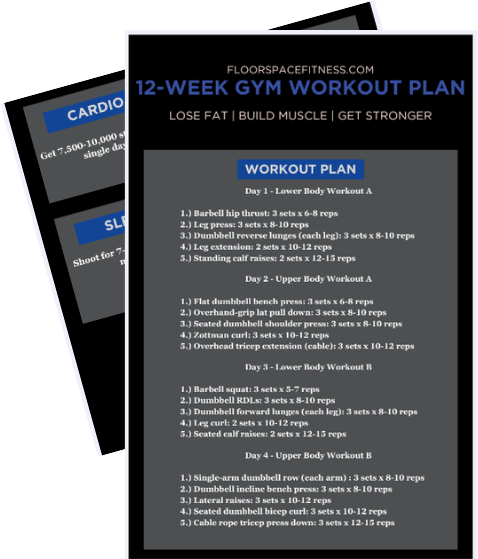
Workout plan overview
Lower body workout A
- 1.) Barbell hip thrust: 3 sets x 6-8 reps (tutorial)
- 2.) Leg press: 3 sets x 8-10 reps (tutorial)
- 3.) Dumbbell reverse lunges (each leg): 3 sets x 8-10 reps (tutorial)
- 4.) Leg extension: 2 sets x 10-12 reps (tutorial)
- 5.) Standing calf raises: 2 sets x 12-15 reps (tutorial)
Upper body workout A
- 1.) Flat dumbbell bench press: 3 sets x 6-8 reps (tutorial)
- 2.) Overhand-grip lat pulldown: 3 sets x 8-10 reps (tutorial)
- 3.) Seated dumbbell shoulder press: 3 sets x 8-10 reps (tutorial)
- 4.) Zottman curl: 3 sets x 10-12 reps (tutorial)
- 5.) Overhead tricep extension (cable): 3 sets x 10-12 reps (tutorial)
Lower body workout B
- 1.) Barbell squat: 3 sets x 5-7 reps (tutorial)
- 2.) Dumbbell RDLs: 3 sets x 8-10 reps (tutorial)
- 3.) Dumbbell forward lunges (each leg): 3 sets x 8-10 reps (tutorial)
- 4.) Leg curl: 2 sets x 10-12 reps (tutorial)
- 5.) Seated calf raises: 2 sets x 12-15 reps (tutorial)
Upper body workout B
- 1.) Single-arm dumbbell row (each arm) : 3 sets x 8-10 reps (tutorial)
- 2.) Dumbbell incline bench press: 3 sets x 8-10 reps (tutorial)
- 3.) Lateral raises: 3 sets x 10-12 reps (tutorial)
- 4.) Seated dumbbell bicep curl: 3 sets x 10-12 reps (tutorial)
- 5.) Cable rope tricep press down: 3 sets x 12-15 reps (tutorial)
Rest time: At least 2 minutes between sets.
This is just a guideline so if you need more rest please take it.
You want your battery recharged as much as possible so you can give your next set 100%, maximum effort.
You NEED to apply progressive overload to see results
Without progressive overload, you’ll be stuck at No Results Boulevard.
I mean… Progressive overload.
Progress.
It’s in the name.
What’s progressive overload?
It’s the act of gradually increasing the amount of weight you lift over time.
An easy way to think about it is this–
Progressive overload means “to do more”.
For example, let’s say you start out doing 100 lbs on squat.
You wouldn’t stay at that same 100 lbs forever.
You’d make your way up to 105 lbs then 110 lbs, and so on.
This gradual increase in weight places added stress on the body and your body adapts to the stress by building muscle.
Guess what muscle does?
It leads to more fat loss.
Common workout questions
How much weight should I lift?
You want to lift as heavy as possible but understand “heavy” varies from person to person.
So, pick a weight:
A.) That’s heavy to YOU given the exercise (I.e. you’ll be able to lift more weight on an exercise like squat than you will an exercise like bicep curls).
B.) That allows you to maintain proper form.
Literally, form > anything else.
I don’t care if you start with 2.5 lbs, if that’s the weight that allows you to maintain your form you go with that.
And as you get stronger you’ll be able to increase the weight.
If your form isn’t on point you won’t work the right muscles and you increase your risk of injury.
Set-to-set, you should pick a weight that enables you to hit somewhere within your rep range.
Let’s say your rep range on dumbbell bench press is 6-8 reps.
And on your first set, you’re able to get 8 reps with the weight you chose.
I’d tell you for your next set to increase the weight and shoot for the lower end of your rep range (6 reps in this case).
Or let’s say you’re able to get 7 reps on your first set.
I’d tell you to stay at the same weight during your workouts until you can hit the high end of your rep range (8) for all of your sets.
This is known as double progression training and it’s sweet because you’ll know exactly when to increase the weight (and by how much).
Read this post for more details on it.
How long will this workout take?
Around 45 minutes-1 hour!
When should I workout each day?
It doesn’t matter what time of the day you workout as long as you can be consistent with it.

Related: Do you struggle with staying consistent? Here are 10 tips to help you improve.
How long until I see results?
Assuming you want to lose fat (building muscle is a whole different beast), you can expect to lose around 0.5 lbs-2 lbs pounds per week.
This is a general guideline though, not a hard-set rule.
Don’t make the mistake of telling yourself, “Ugh, I only lost X lbs this month.”
That diminishes the results you’re seeing.
At the end of the day, progress is progress
And as long as you keep doing what you have been, that’s exactly what you’ll get.
More progress.
Cardio guidelines
Your cardio for this plan is simple…
Walking.
Aka the best cardio for fat loss (at least, in my humble opinion).
That’s not a typo, I said what I said. 😜
Specifically, you’ll be getting 7,500-10,000 steps every single day.
Related: How to get 10K steps a day.
Not only does walking count as exercise (don’t let anyone tell you differently) but it’s one of the very best things you can do for your overall health.
1.) You burn 300% more calories through daily movement (walking) than you do your actual workouts.
2.) Walking significantly decreases your all-cause mortality risk (your risk of dying from virtually any disease or condition).
Your steps don’t have to be intense.
You can just do them at a nice, leisurely pace like you’re walking in the park.
It also doesn’t matter when you do them either.
You could 15 minutes here, 30 minutes there, another 20 minutes later on…Until you reach your step goal.
Just so we’re clear, this is 7,500-10,000 steps EVERY SINGLE DAY, not just days you’re working out.
I know iPhones have a health app built in that tracks your steps.
The only downside is you have to take your phone with you wherever you go.
If you don’t want to go that route, you can get a step/health tracker on Amazon for 20 bucks or somewhere around there.

Nutrition > working out for fat loss
Don’t get me wrong, strength training is uber important for fat loss but it’s in the passenger seat.
Your diet drives the fat loss bus.
The scale won’t budge if you’re eating more than you should, no matter how much you workout.
Lucky for you, there’s something you can do to know FOR SURE you’re eating the correct amount of food to lose weight.
The cool thing about counting calories is that you’ll learn how to make healthier food choices while at the same time have the flexibility to still enjoy your favorite sweets, treats and snacks.
No food is off limits, it’s all about moderation and finding that “happy medium.”
Research even shows those who eat flexibility lose more weight than those who deprive themselves and try to eat “clean” 100% of the time.
Calories matter, first and foremost.
But what you eat also matters.
I have two types of foods for you that’ll help keep your calories in check and ultimately lead to you losing more fat.
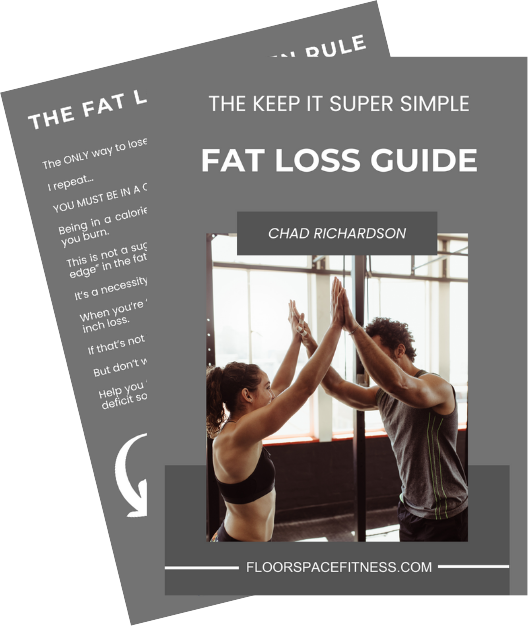
1. Protein
There are three main reasons why protein is so important:
- It’s super filling
- You speed up your metabolism just by eating it (Your body burns more calories digesting protein than any other food).
- Fat loss comes with losing a little bit of muscle. However, protein helps preserve muscle mass. You want to hold onto as much muscle as you can because, again, more muscle = more fat loss.
Somewhere between 0.7g-1g per pound of your goal bodyweight in protein daily is ideal.
Related: 5 simple ways to eat more protein.
2. Fiber
The benefit most people think of is it prevents constipation.
That’s true but fiber has a lot more to offer than just that.
Like protein, fiber fills you up.
And the benefits for your overall health that come with eating more fiber are nothing short of phenomenal.
For example:
- You lower your risk of heart disease by 9% for every 7 grams of fiber you eat.
- You lower your risk of breast cancer by 5% for every 10 grams of fiber you eat.
- Eating enough fiber regularly reduces your all-cause mortality risk (chances of dying from virtually anything) by 19%.
Aim for 25-35 grams of fiber daily.
Let’s talk about the elephant in the room…Carbs
You have absolutely NOTHING to fear about carbs.
They’re your body’s main fuel source and give you the energy to kill it in the gym.
Are you sitting there right now thinking to yourself, “But Chad, I heard they make you gain weight”?
Let’s think about this logically.
If carbs did automatically lead to weight gain, what would happen if you had just one noodle (which is straight carbs) a day?
You’d lose weight, right?
But I thought carbs just automatically lead to weight gain?
Hmmmm the math ain’t mathin’ 🤔
That’s because it’s not carbs specifically that cause you to gain weight.
It doesn’t matter the food or food type, you only gain weight by eating too many calories overall
HOW MUCH you eat trumps what you eat.
Sleep
Sleep is key to recovery.
And also, as sleep goes down, hunger goes up
So the more sleep you can get the better.
You may have to sacrifice watching “just one more episode” every night but it’ll be more than worth it when you’re not starving and actually able to stay within your calories.
Shoot for 7-9 hours each night and if that isn’t feasible for you just try to get at least half an hour to an hour more than you currently are.
12-week dumbbell workout plan
If you like this workout plan, be sure to check out my 12-week dumbbell workout plan as well.
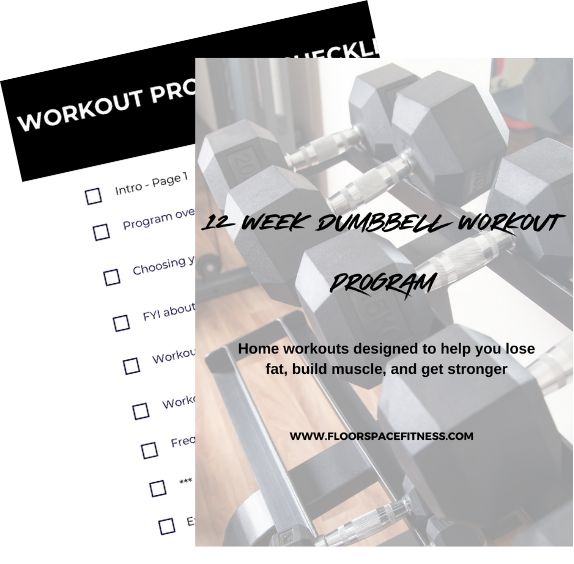

What's up?
I’m Chad, I’m happy you’re here! I’m a certified personal trainer and my goal is to help you form practical, sustainable habits that lead to lifelong fitness results. If you want to lose fat, build muscle, and live a healthier, happier life then you’re right where you need to be. 💪🏾
Free resources
⬇⬇⬇


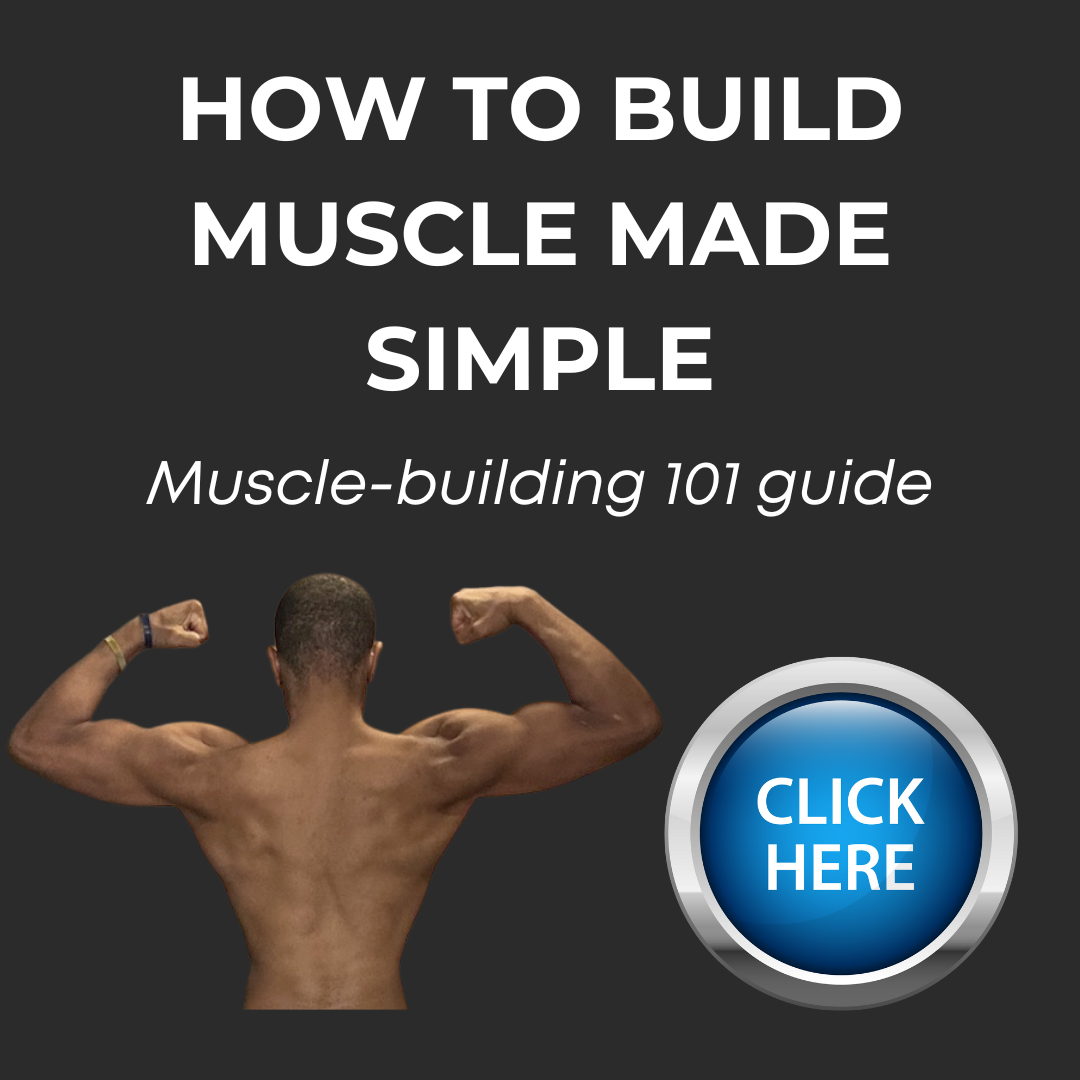
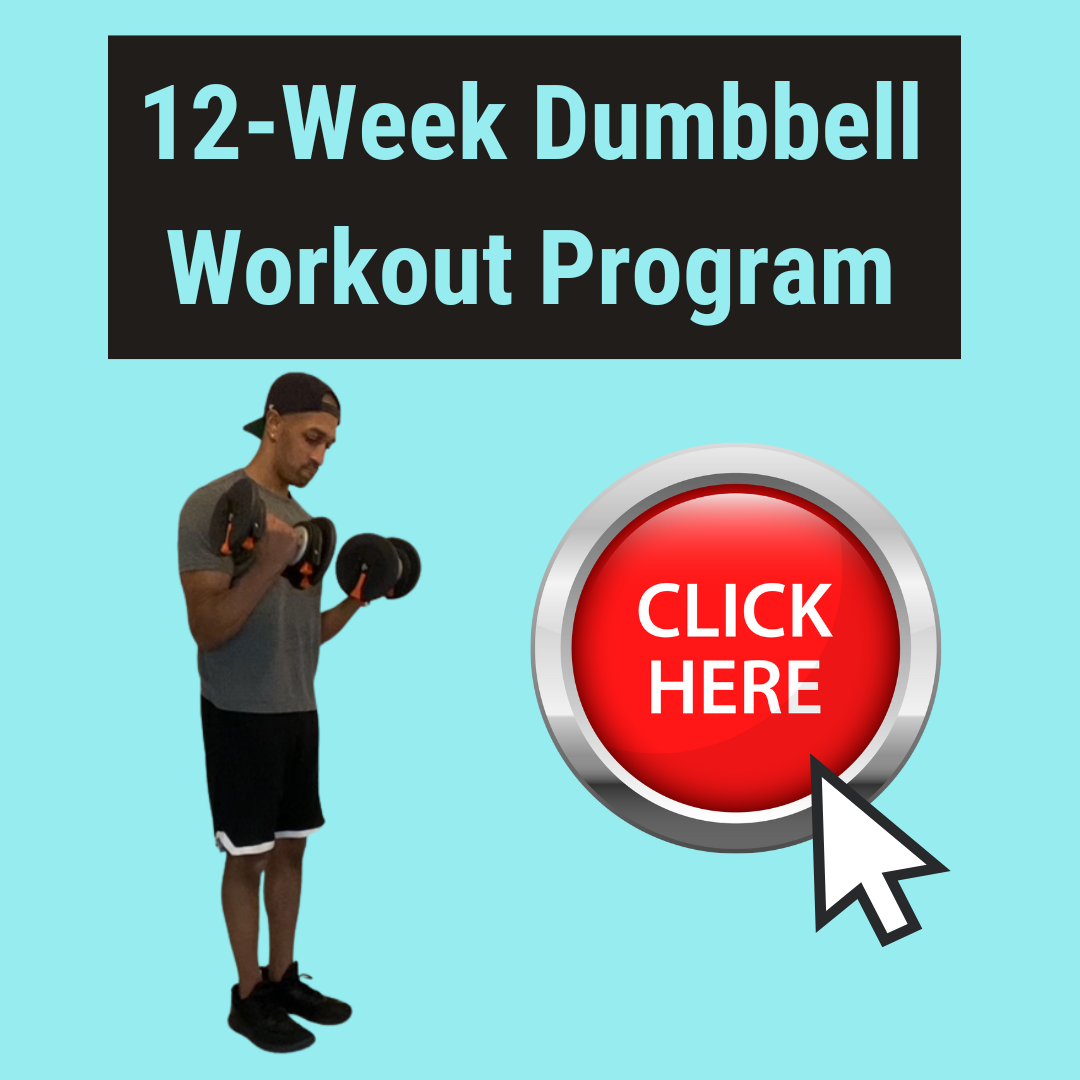


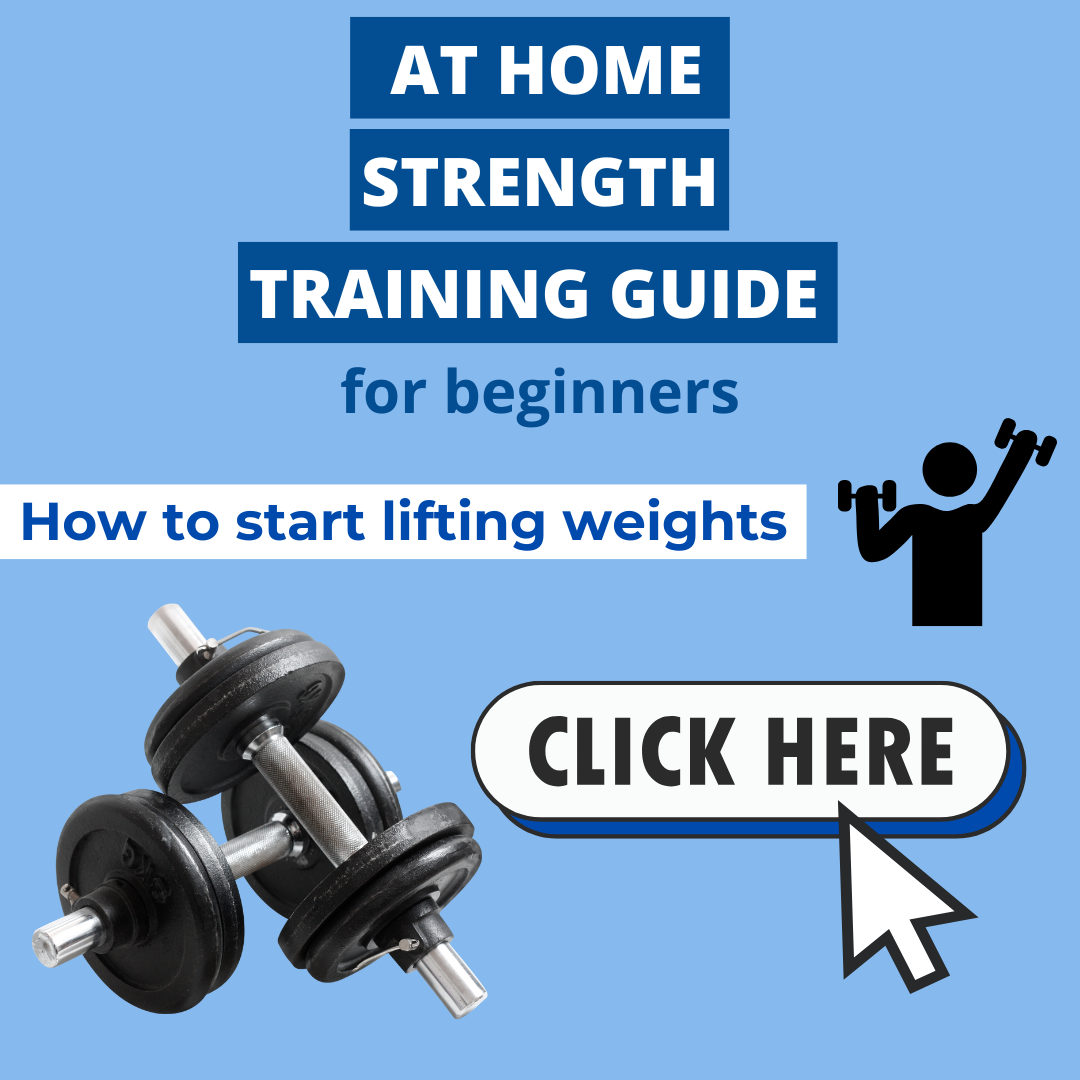
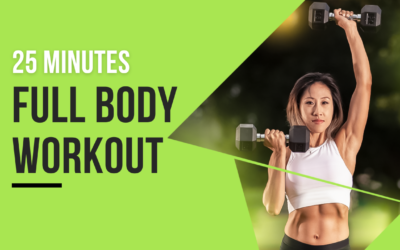
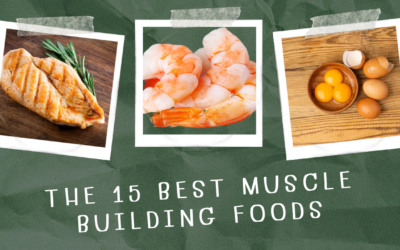

0 Comments